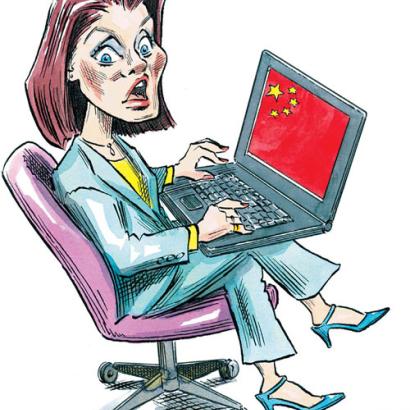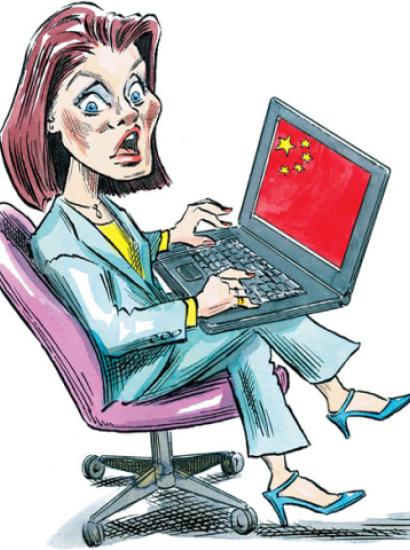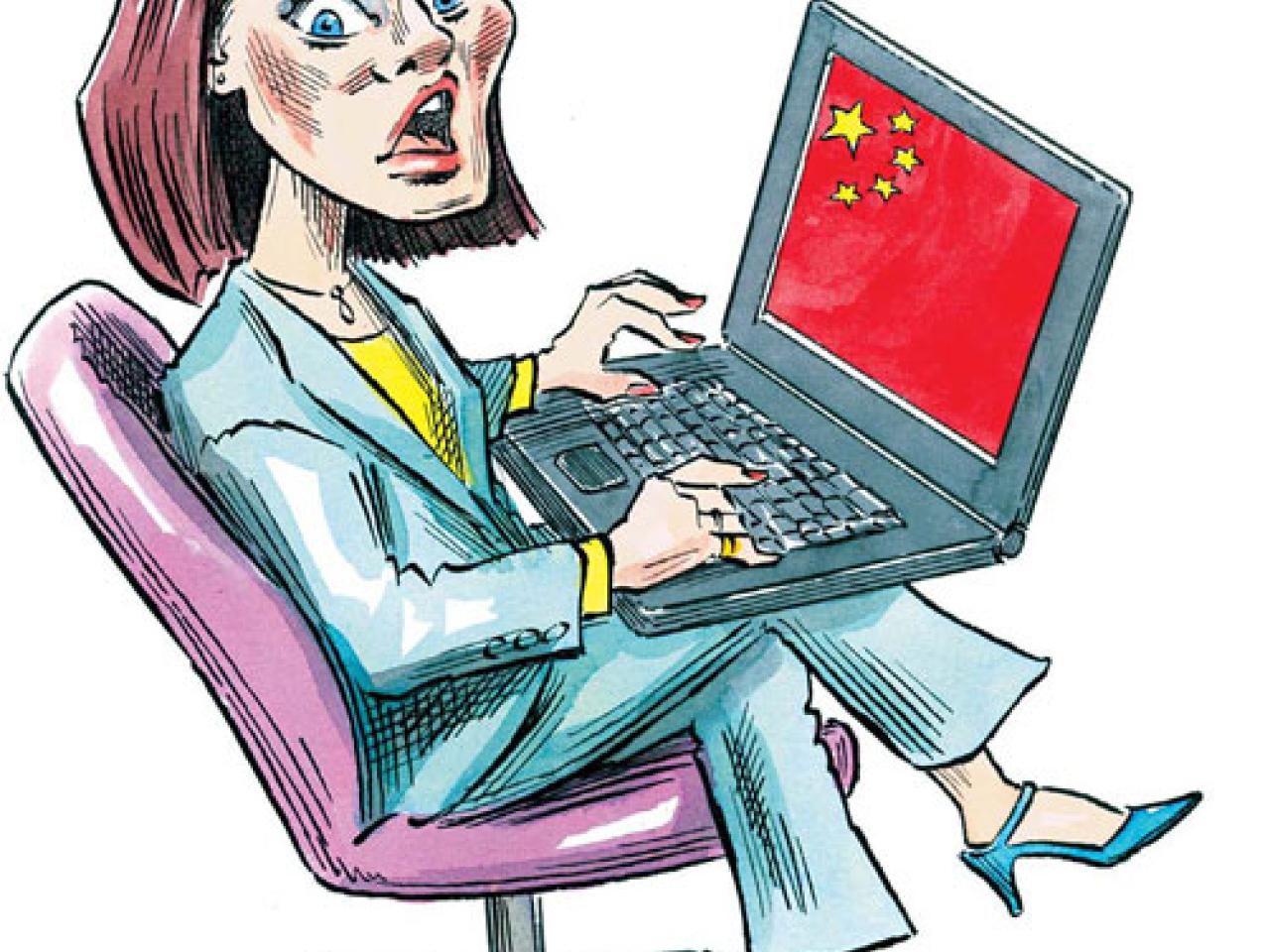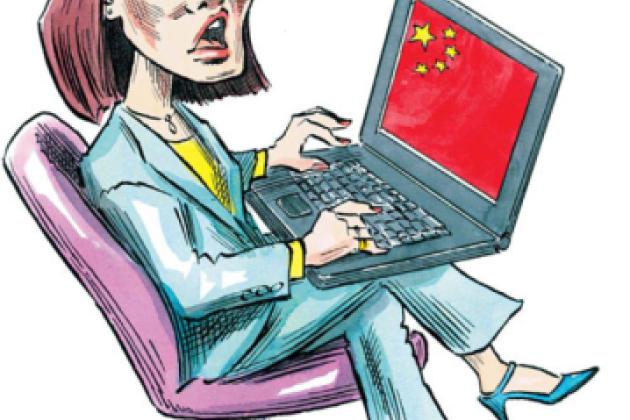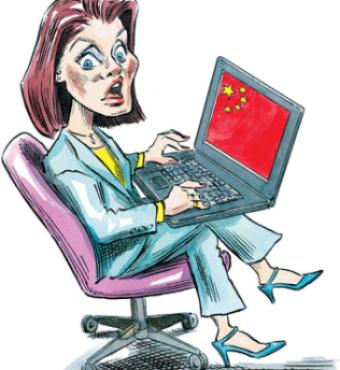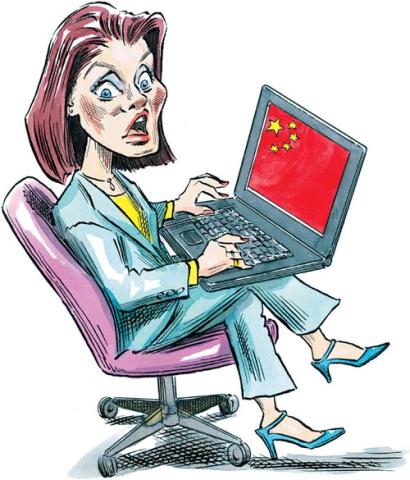Learning that I would be speaking in this splendid Monterey Bay Aquarium, my first thought was, “Great, a metaphor for business in front of us: big fish eating little ones, maybe some sharks.” But I have a more benign topic: China (although some of you might think I haven’t changed it all that much). I want to talk to you about China’s information technology (IT) industry.
Much of the reporting on China’s IT trade is misleading. Consider this: last year, China exported $342 billion worth of electronic and information technology products. That is a very big number, but even more remarkable is that it was 30 percent more than the year before, $80 billion more. That increase is almost the equal of Chile’s total national output. No wonder it is said that China is taking over world manufacturing.
But did China really “make” $342 billion of these products? Not exactly. The value of its imports in this category is about 85 percent of the value of its exports, with the difference being the value added in China. So maybe China added $60 billion of value last year in this sector. That is still an impressive number but less than overwhelming. In the IT industry, China is still more of an assembler of products than an end-to-end manufacturer of them.
If you wonder who is responsible for the bulk of this trade, the answer is Taiwanese companies. In 2003, Foxconn, a subsidiary of Hon Hai, was China’s number-one export company. Second was Quanta Computer, the world’s largest producer of notebook computers (and the single largest supplier for Dell). Third was Asustek Computer. People on both sides of the strait maintain a discreet silence on this trade.
There are, of course, some substantial mainland China exporters, including Lenovo, which bought IBM’s PC business, and the telecom-equipment company Huawei, and there will be many more.
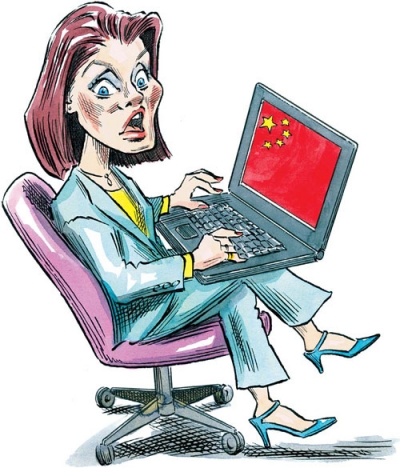
Then there are the many stories on China’s semiconductor (IC) “consumption,” which reportedly went up fivefold from 1999 to $56 billion in 2005, one-fourth of global output. But that wasn’t really consumption; two-thirds of these mostly imported chips were promptly exported in assembled goods. Although domestic IC production is growing rapidly, China is likely to remain by far the world’s largest importer of semiconductors for many years to come—and continue to be a large exporter of them in finished products. (Air freight across the Pacific must be a very good business.)
China’s domestic market for IT products is growing rapidly, with, for instance, perhaps 400 million cell phones and 150 million Internet users. I’m not sure how long it will take for it to sort out its 3-G standards (with a delay in its homegrown TD-SCDMA one), but consider the awesome implications of having, say, a half-billion 3-G mobile Internet users.
China’s Internet service suppliers are already beating the ones in Silicon Valley domestically: eBay and Yahoo have effectively folded, and even mighty Google is in second place. Government help is one reason, but the Chinese locals also have a better feel for the market. How many of you have heard ofTencent? Its mobile instant-messaging service, QQ, has more than 100 million users, and its services combine aspects of MySpace, YouTube, and Second Life. China’s Central Bank, worried about monetary stability, has issued a warning about Tencent’s virtual currency, Q-coins, which allows customers to shop online for games, music, and virtual furniture.
Many foreign firms are setting up R&D operations in China, nearly 1,000 of them by now. There are several reasons. Domestic market growth—that huge mobile telecom market, for instance—leads them to customize products on the ground. Also, some of this R&D supports large manufacturing and sourcing activities; with rapid product cycles, suppliers need development activities nearby. Then there is also a lot of talent in China that can be applied to their worldwide needs (talent often described as “raw,” but learning fast).
Some of us have been investigating what actually goes on in these foreign—and domestic—R&D centers. The short answer is little research (this should be no surprise; not much research, properly defined, is done by U.S. companies anymore), or much development, but a lot of “design” work.
Here are three observations:
First, imitation reigns—which is rational for Chinese businesses given the wealth of existing technologies and business models in the world. A Shanghai venture capitalist put it this way: “Why innovate when there is so much low-hanging fruit out there?”
Second, several indicators show Chinese inventors getting more U.S. patents and, more broadly, improving their innovative abilities. Those Chinese Internet services companies, for instance. Focus Media has video displays in elevator lobbies with a large captive audience. (All numbers in China are big.) The content of these displays is regularly changed—cost-effectively—by workers who travel on bicycles.
Third, two different types of firms stand out: one with strong foreign links, the other a set of service firms that are learning to cope with challenging Chinese conditions.
Being dependent on foreign technology is deeply unsatisfactory to China’s leaders, who see it as unseemly for a great nation and as a possible national security vulnerability. The Chinese resent having to pay royalties to foreigners. So the leaders want China to become a major creator of technology. The goal is “self-reliance” in science and technology, meaning reduced reliance on imported technology or, more broadly, intellectual property. The 15-year Science and Technology Plan specifies 16 major engineering projects and four major basic research programs. Chinese R&D spending aims to go from $30 billion in 2005 to $113 billion in 2020, with basic research more than doubling as a share of GDP. The idea is to make China a world powerhouse in science and technology.
Don’t bet against this. Consider, for example, the vast expansion in higher education that is under way. The number of admitted students went from 1.5 million in 1999 to 7.5 million in 2005, the fastest, largest-scale increase in postsecondary education the world has ever seen. A large increase in postgraduate enrollment is also under way. The problems include educational quality and finding jobs for the torrent of graduates, as well as something like what we call grade inflation. According to Vivek Wadha at Duke University, many of the graduates are from two- and three-year programs; the Chinese definition of “engineer” is not quite the same as the American or German or Japanese one. Nonetheless, a lot more talent is getting much more education.
What does this mean for us in the developed countries?
Our consumers are benefiting from lower prices, but the production side is more complicated. Consider this musical analogy: Silicon Valley and other regions in the developed world have “composers” and “conductors”; Taiwan and some other Asian countries have “orchestrators.” What about the “players”? At one time they were mainly in the United States and in industrialized countries, plus Taiwan and Korea, but now many are in China and India. All parts of this musical scene are doing well—with the exception of players in the developed world, many of whom are being displaced by Asians. China is developing orchestrators and conductors, and its leaders intend it to have composers as well. So there will be heightened competition at all levels—implying both challenges and opportunities for us.
Looking ahead, I see bold business moves. Lenovo’s buying of IBM’s losing PC business was one such (so far, making it Lenovo’s losing PC business). Maybe someday a Chinese hedge fund will scarf up TI or Nokia or Intel (just kidding). But fasten your seat belt.








